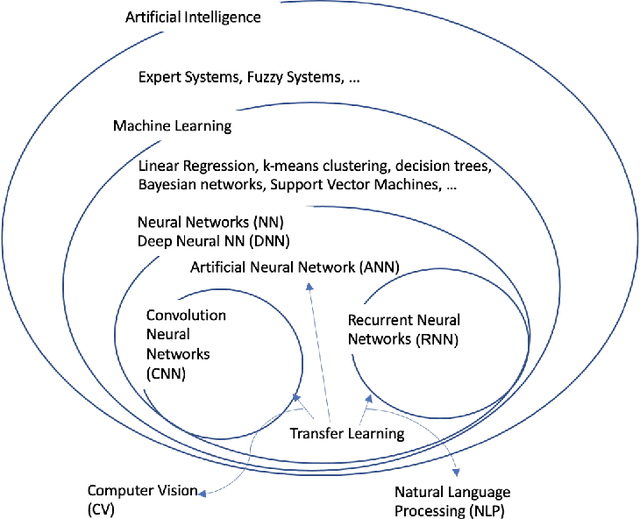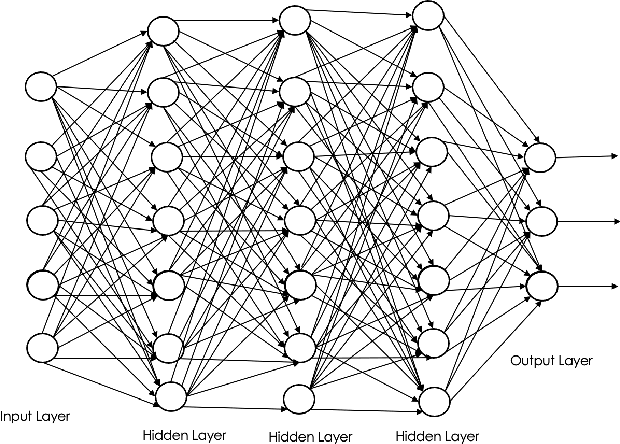Shahram Rahimi
From Patient Consultations to Graphs: Leveraging LLMs for Patient Journey Knowledge Graph Construction
Mar 18, 2025Abstract:The transition towards patient-centric healthcare necessitates a comprehensive understanding of patient journeys, which encompass all healthcare experiences and interactions across the care spectrum. Existing healthcare data systems are often fragmented and lack a holistic representation of patient trajectories, creating challenges for coordinated care and personalized interventions. Patient Journey Knowledge Graphs (PJKGs) represent a novel approach to addressing the challenge of fragmented healthcare data by integrating diverse patient information into a unified, structured representation. This paper presents a methodology for constructing PJKGs using Large Language Models (LLMs) to process and structure both formal clinical documentation and unstructured patient-provider conversations. These graphs encapsulate temporal and causal relationships among clinical encounters, diagnoses, treatments, and outcomes, enabling advanced temporal reasoning and personalized care insights. The research evaluates four different LLMs, such as Claude 3.5, Mistral, Llama 3.1, and Chatgpt4o, in their ability to generate accurate and computationally efficient knowledge graphs. Results demonstrate that while all models achieved perfect structural compliance, they exhibited variations in medical entity processing and computational efficiency. The paper concludes by identifying key challenges and future research directions. This work contributes to advancing patient-centric healthcare through the development of comprehensive, actionable knowledge graphs that support improved care coordination and outcome prediction.
The AI Pentad, the CHARME$^{2}$D Model, and an Assessment of Current-State AI Regulation
Mar 08, 2025Abstract:Artificial Intelligence (AI) has made remarkable progress in the past few years with AI-enabled applications beginning to permeate every aspect of our society. Despite the widespread consensus on the need to regulate AI, there remains a lack of a unified approach to framing, developing, and assessing AI regulations. Many of the existing methods take a value-based approach, for example, accountability, fairness, free from bias, transparency, and trust. However, these methods often face challenges at the outset due to disagreements in academia over the subjective nature of these definitions. This paper aims to establish a unifying model for AI regulation from the perspective of core AI components. We first introduce the AI Pentad, which comprises the five essential components of AI: humans and organizations, algorithms, data, computing, and energy. We then review AI regulatory enablers, including AI registration and disclosure, AI monitoring, and AI enforcement mechanisms. Subsequently, we present the CHARME$^{2}$D Model to explore further the relationship between the AI Pentad and AI regulatory enablers. Finally, we apply the CHARME$^{2}$D model to assess AI regulatory efforts in the European Union (EU), China, the United Arab Emirates (UAE), the United Kingdom (UK), and the United States (US), highlighting their strengths, weaknesses, and gaps. This comparative evaluation offers insights for future legislative work in the AI domain.
RAAD-LLM: Adaptive Anomaly Detection Using LLMs and RAG Integration
Mar 04, 2025Abstract:Anomaly detection in complex industrial environments poses unique challenges, particularly in contexts characterized by data sparsity and evolving operational conditions. Predictive maintenance (PdM) in such settings demands methodologies that are adaptive, transferable, and capable of integrating domain-specific knowledge. In this paper, we present RAAD-LLM, a novel framework for adaptive anomaly detection, leveraging large language models (LLMs) integrated with Retrieval-Augmented Generation (RAG). This approach addresses the aforementioned PdM challenges. By effectively utilizing domain-specific knowledge, RAAD-LLM enhances the detection of anomalies in time series data without requiring fine-tuning on specific datasets. The framework's adaptability mechanism enables it to adjust its understanding of normal operating conditions dynamically, thus increasing detection accuracy. We validate this methodology through a real-world application for a plastics manufacturing plant and the Skoltech Anomaly Benchmark (SKAB). Results show significant improvements over our previous model with an accuracy increase from 70.7 to 89.1 on the real-world dataset. By allowing for the enriching of input series data with semantics, RAAD-LLM incorporates multimodal capabilities that facilitate more collaborative decision-making between the model and plant operators. Overall, our findings support RAAD-LLM's ability to revolutionize anomaly detection methodologies in PdM, potentially leading to a paradigm shift in how anomaly detection is implemented across various industries.
CLINICSUM: Utilizing Language Models for Generating Clinical Summaries from Patient-Doctor Conversations
Dec 05, 2024Abstract:This paper presents ClinicSum, a novel framework designed to automatically generate clinical summaries from patient-doctor conversations. It utilizes a two-module architecture: a retrieval-based filtering module that extracts Subjective, Objective, Assessment, and Plan (SOAP) information from conversation transcripts, and an inference module powered by fine-tuned Pre-trained Language Models (PLMs), which leverage the extracted SOAP data to generate abstracted clinical summaries. To fine-tune the PLM, we created a training dataset of consisting 1,473 conversations-summaries pair by consolidating two publicly available datasets, FigShare and MTS-Dialog, with ground truth summaries validated by Subject Matter Experts (SMEs). ClinicSum's effectiveness is evaluated through both automatic metrics (e.g., ROUGE, BERTScore) and expert human assessments. Results show that ClinicSum outperforms state-of-the-art PLMs, demonstrating superior precision, recall, and F-1 scores in automatic evaluations and receiving high preference from SMEs in human assessment, making it a robust solution for automated clinical summarization.
AAD-LLM: Adaptive Anomaly Detection Using Large Language Models
Nov 01, 2024Abstract:For data-constrained, complex and dynamic industrial environments, there is a critical need for transferable and multimodal methodologies to enhance anomaly detection and therefore, prevent costs associated with system failures. Typically, traditional PdM approaches are not transferable or multimodal. This work examines the use of Large Language Models (LLMs) for anomaly detection in complex and dynamic manufacturing systems. The research aims to improve the transferability of anomaly detection models by leveraging Large Language Models (LLMs) and seeks to validate the enhanced effectiveness of the proposed approach in data-sparse industrial applications. The research also seeks to enable more collaborative decision-making between the model and plant operators by allowing for the enriching of input series data with semantics. Additionally, the research aims to address the issue of concept drift in dynamic industrial settings by integrating an adaptability mechanism. The literature review examines the latest developments in LLM time series tasks alongside associated adaptive anomaly detection methods to establish a robust theoretical framework for the proposed architecture. This paper presents a novel model framework (AAD-LLM) that doesn't require any training or finetuning on the dataset it is applied to and is multimodal. Results suggest that anomaly detection can be converted into a "language" task to deliver effective, context-aware detection in data-constrained industrial applications. This work, therefore, contributes significantly to advancements in anomaly detection methodologies.
Medical-GAT: Cancer Document Classification Leveraging Graph-Based Residual Network for Scenarios with Limited Data
Oct 19, 2024Abstract:Accurate classification of cancer-related medical abstracts is crucial for healthcare management and research. However, obtaining large, labeled datasets in the medical domain is challenging due to privacy concerns and the complexity of clinical data. This scarcity of annotated data impedes the development of effective machine learning models for cancer document classification. To address this challenge, we present a curated dataset of 1,874 biomedical abstracts, categorized into thyroid cancer, colon cancer, lung cancer, and generic topics. Our research focuses on leveraging this dataset to improve classification performance, particularly in data-scarce scenarios. We introduce a Residual Graph Attention Network (R-GAT) with multiple graph attention layers that capture the semantic information and structural relationships within cancer-related documents. Our R-GAT model is compared with various techniques, including transformer-based models such as Bidirectional Encoder Representations from Transformers (BERT), RoBERTa, and domain-specific models like BioBERT and Bio+ClinicalBERT. We also evaluated deep learning models (CNNs, LSTMs) and traditional machine learning models (Logistic Regression, SVM). Additionally, we explore ensemble approaches that combine deep learning models to enhance classification. Various feature extraction methods are assessed, including Term Frequency-Inverse Document Frequency (TF-IDF) with unigrams and bigrams, Word2Vec, and tokenizers from BERT and RoBERTa. The R-GAT model outperforms other techniques, achieving precision, recall, and F1 scores of 0.99, 0.97, and 0.98 for thyroid cancer; 0.96, 0.94, and 0.95 for colon cancer; 0.96, 0.99, and 0.97 for lung cancer; and 0.95, 0.96, and 0.95 for generic topics.
Transfer Learning Applied to Computer Vision Problems: Survey on Current Progress, Limitations, and Opportunities
Sep 12, 2024



Abstract:The field of Computer Vision (CV) has faced challenges. Initially, it relied on handcrafted features and rule-based algorithms, resulting in limited accuracy. The introduction of machine learning (ML) has brought progress, particularly Transfer Learning (TL), which addresses various CV problems by reusing pre-trained models. TL requires less data and computing while delivering nearly equal accuracy, making it a prominent technique in the CV landscape. Our research focuses on TL development and how CV applications use it to solve real-world problems. We discuss recent developments, limitations, and opportunities.
Explainable Anomaly Detection: Counterfactual driven What-If Analysis
Aug 21, 2024



Abstract:There exists three main areas of study inside of the field of predictive maintenance: anomaly detection, fault diagnosis, and remaining useful life prediction. Notably, anomaly detection alerts the stakeholder that an anomaly is occurring. This raises two fundamental questions: what is causing the fault and how can we fix it? Inside of the field of explainable artificial intelligence, counterfactual explanations can give that information in the form of what changes to make to put the data point into the opposing class, in this case "healthy". The suggestions are not always actionable which may raise the interest in asking "what if we do this instead?" In this work, we provide a proof of concept for utilizing counterfactual explanations as what-if analysis. We perform this on the PRONOSTIA dataset with a temporal convolutional network as the anomaly detector. Our method presents the counterfactuals in the form of a what-if analysis for this base problem to inspire future work for more complex systems and scenarios.
A Survey on Privacy Attacks Against Digital Twin Systems in AI-Robotics
Jun 27, 2024



Abstract:Industry 4.0 has witnessed the rise of complex robots fueled by the integration of Artificial Intelligence/Machine Learning (AI/ML) and Digital Twin (DT) technologies. While these technologies offer numerous benefits, they also introduce potential privacy and security risks. This paper surveys privacy attacks targeting robots enabled by AI and DT models. Exfiltration and data leakage of ML models are discussed in addition to the potential extraction of models derived from first-principles (e.g., physics-based). We also discuss design considerations with DT-integrated robotics touching on the impact of ML model training, responsible AI and DT safeguards, data governance and ethical considerations on the effectiveness of these attacks. We advocate for a trusted autonomy approach, emphasizing the need to combine robotics, AI, and DT technologies with robust ethical frameworks and trustworthiness principles for secure and reliable AI robotic systems.
A Survey of Transformer Enabled Time Series Synthesis
Jun 04, 2024Abstract:Generative AI has received much attention in the image and language domains, with the transformer neural network continuing to dominate the state of the art. Application of these models to time series generation is less explored, however, and is of great utility to machine learning, privacy preservation, and explainability research. The present survey identifies this gap at the intersection of the transformer, generative AI, and time series data, and reviews works in this sparsely populated subdomain. The reviewed works show great variety in approach, and have not yet converged on a conclusive answer to the problems the domain poses. GANs, diffusion models, state space models, and autoencoders were all encountered alongside or surrounding the transformers which originally motivated the survey. While too open a domain to offer conclusive insights, the works surveyed are quite suggestive, and several recommendations for best practice, and suggestions of valuable future work, are provided.
 Add to Chrome
Add to Chrome Add to Firefox
Add to Firefox Add to Edge
Add to Edge